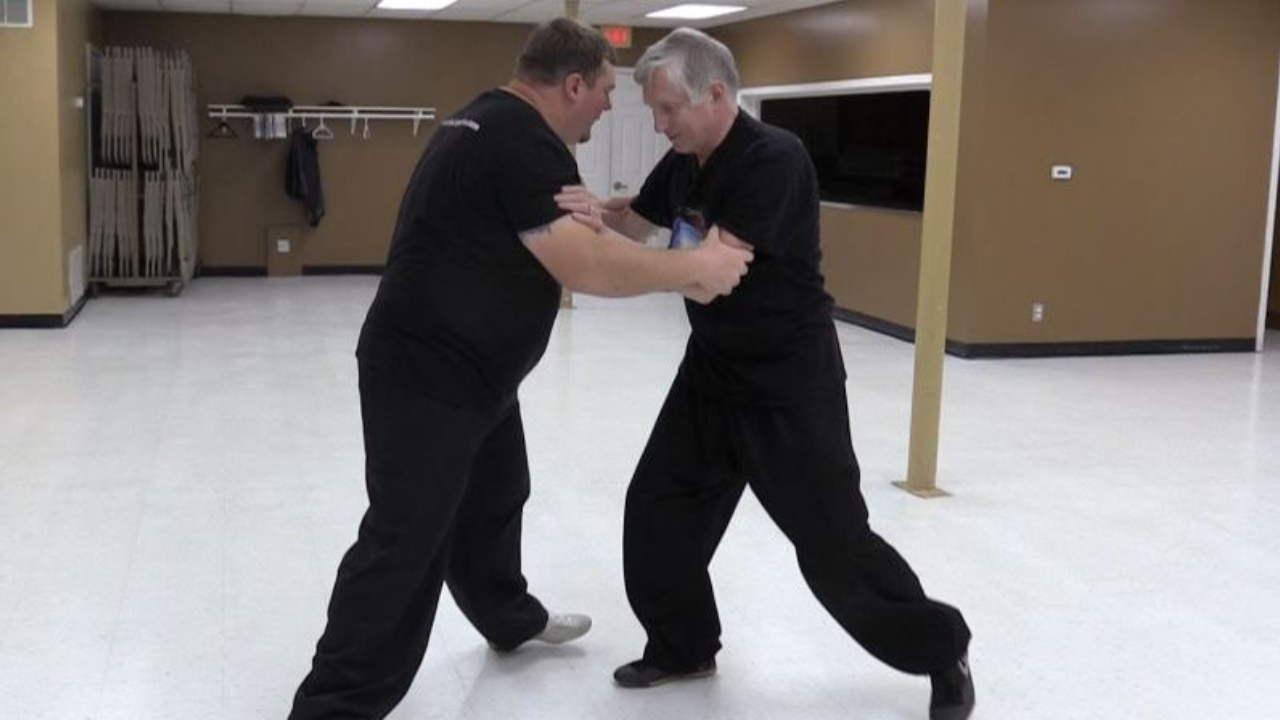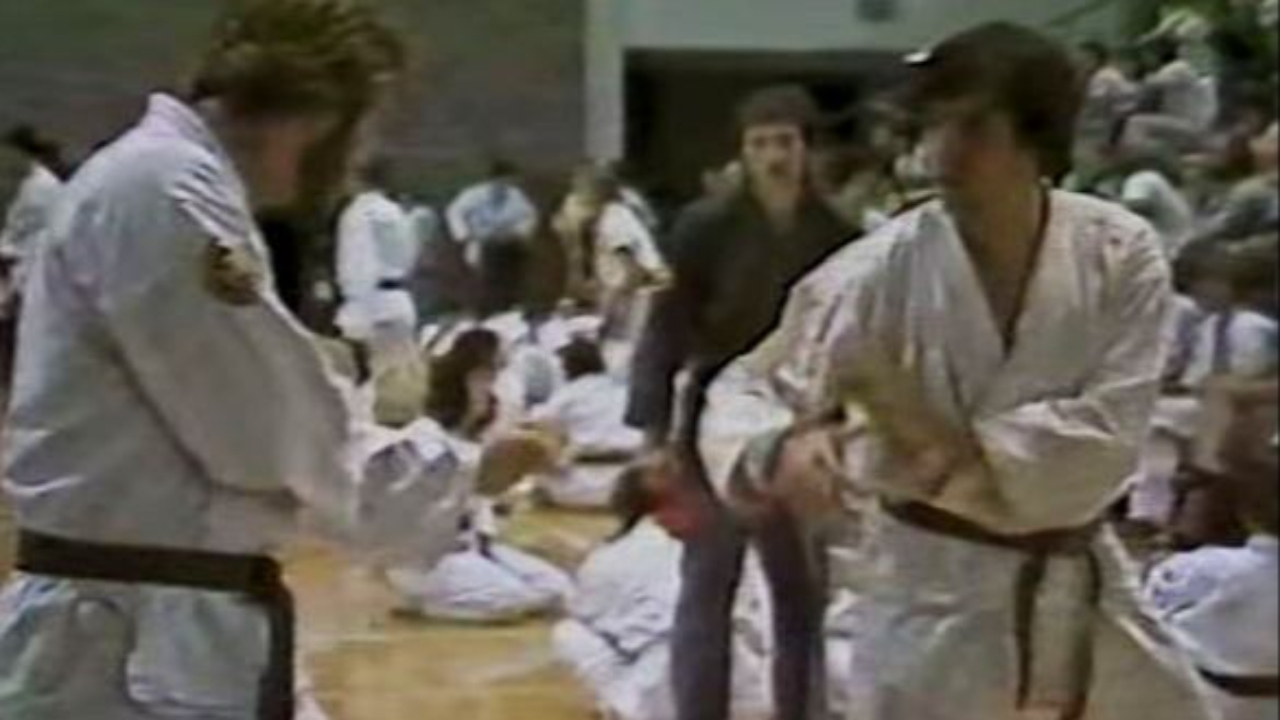How Zhan Zhuang - Standing Stake - Can Improve Your Tai Chi

Zhan Zhuang is also called "Standing Stake" or "Standing Like A Pole." It is the most important exercise in Tai Chi. It can be used for meditation and qigong, but it also will help improve your Tai Chi.
Here are the basics of getting into a Zhan Zhuang stance:
1. Stand with your feet shoulder-width apart.
2. Raise your arms as if hugging a tree with the palms facing you.
3. Relax the knees and let them flex a bit.
4. Relax every muscle in your body - neck, shoulders, chest, abdomen, hips and legs.
5. Keep the head up and the chin slightly tucked.
6. "Sink" your weight -- your "energy" -- and feel as if your weight is sinking into the ground or floor.
7. Calm the mind along with the body.
Here are important things you need to incorporate into your Zhan Zhuang practice:
8. Relax the lower back. We usually keep it tense when we are standing. When you relax the muscles in the lower back, you will feel your buttocks sink and "tuck" slightly. That is a good thing.
9. You should ...
Connecting with Your Opponent's Center in Tai Chi

When you and a partner are doing push hands, or if you find yourself in a situation that calls for self-defense, one of your primary goals is to "remain centered."
Remaining centered requires you to maintain your mental balance and physical balance. If you lose your balance -- mentally or physically -- you are vulnerable. The same is true for your opponent.
This means that one of your goals when facing an opponent is to find his center, connect with it and control it.
On my website there are videos related to this topic. You can meld with your opponent's center as it is turning, helping it continue in the direction it is traveling. That's my favorite way to control an opponent's center, but there is another way.
When you practice push hands with a partner, you try to remain sensitive, and you do not want to give him an opening. You hide your internal strength from him. You are relaxed but aware, connected through the body, but you are flexible, moving, and able to respond and ...
The Value of Silk-Reeling Exercises in the Practice of Internal Arts

Last night, my practice consisted of a few Silk-Reeling exercises. I selected four or five that I don't practice as often as I should (including shoulder reeling, ankle and leg reeling and a couple more) and I worked them over and over, trying to feel the connection from the ground through the body. Relax, sink, feel it from the ground, spiraling through, connected and strong.
If you get one Silk-Reeling exercise right, you are doing good Taiji, and good Bagua. The exercises I do were made popular by Chen Xiaowang during the past 20 years or so. The exercises are among the first lessons that my students practice, laying the foundation for all of the body mechanics
that are crucial for the internal arts -- Taiji, Bagua, and Xingyi.
Silk-Reeling "Energy" is not really a real type of "energy" in our body. The word "Energy" is often misinterpreted when translated from kung-fu texts. It should be thought of as a "method," a way of moving the body as you deal with an opponent's forc...
Tai Chi Self-Defense - There Are No Transitions in Tai Chi

When I was first learning Tai Chi, the word "transition" was used often. Holding the Ball was a transition into Part the Wild Horse's Mane. Circling the arms was a transition for Brush Knee Step Forward. After changing teachers and styles, I learned a simple truth:
There are no transitions in Tai Chi.
As I later learned, a self-defense application is built into every movement in Tai Chi. Every movement.
No matter where your hands and feet are, a fighting application is there.
Here is a case in point, one of 108 self-defense applications demonstrated through 259 photos in my new ebook, Yang Tai Chi 24 Form Self Defense. The ebook is only $4.99 through Amazon Kindle -- a great reference for those who practice Yang style Tai Chi, particularly the 24 Form.
Let's say that someone comes up behind you and grabs your shoulder, preparing to punch your lights out. Now, this could even be done from a clinch position or against a punch, but I'm showing this particular set-up as a way to d...
Investing in Loss - How Losing Your Ego in Practice Allows You to Win

One of the more interesting concepts I learned when I started in Chen Taiji is the concept of "investing in loss." It was a foreign concept, but over time, I embraced it.
When you invest in loss, you check your ego at the door. This can apply to any learning situation, but it is mostly applied in push hands. You experiment against your opponent and learn what works and what doesn't. You learn what's effective and what isn't.
Your goal in practice is not to win. Your goal is to prepare yourself to win when your life depends on it. So your opponent may get the advantage of you. So what? The question you should focus on is not, "Did I win?"
The proper question is, "What did I learn?"
After you try it again and again, the logical next question is, "Have I improved?"
Some people describe "investing in loss" as allowing an opponent to attack while you appear defenseless. For me, that description doesn't work. Pretending to be weak and luring in an opponent so you can lower the boom ...
Focus on the Moon, Not the Teacher -- Taiji, Xingyi, Bagua Advice

There is a Zen proverb -- When a master points at the moon, many people never see the moon, they only look at the master.
Bruce Lee said it in a slightly different way, when he told the student, "It is like a finger pointing a way to the moon." When the student gazes at his hand, Bruce slaps his head and says, "Don't concentrate on the finger or you will miss all that heavenly glory."
I've been very busy since the Chen Xiaoxing workshop on Xinjia Yilu two weeks ago and haven't written much about it since that time. Instead of writing, I've been practicing the movements we went through in Chicago. It has been on my mind a lot.
The workshop was a great experience, and it was organized in a way that promoted learning. In workshops past, I would scribble as many notes as possible during breaks or at the end of the day, trying to remember the little details. In this workshop, remembering wasn't a problem.
Chen Xiaoxing would demonstrate a sequence of movements several times -- slowly --...
Chen Xiaoxing and Xinjia Yilu -- A Good Workshop in Chicago

This weekend, I attended a workshop held in Chicago by Grandmaster Chen Xiaoxing, who was teaching Xinjia Yilu. I've received some instruction on the form, including a little information from my friend and teacher Jim Criscimagna and also a short private lesson with Chen Xiaoxing's son, Chen Ziqiang. I still had questions about how to perform certain moves.
Chen Xiaoxing -- who just turned 60 (and so did I) -- is the younger brother of Chen Xiaowang. He stayed in our home for a week when Nancy and I sponsored his visa in 2006, allowing him to come to the U.S. for a series of workshops. He held one in the school we owned at the time, and trained with me in our basement for a week. It was a lot of fun and I got some great insights. He didn't speak a word of English and I didn't speak Mandarin, but we managed.
He recognized me on Saturday and we had a brief exchange through the interpreter at t...
